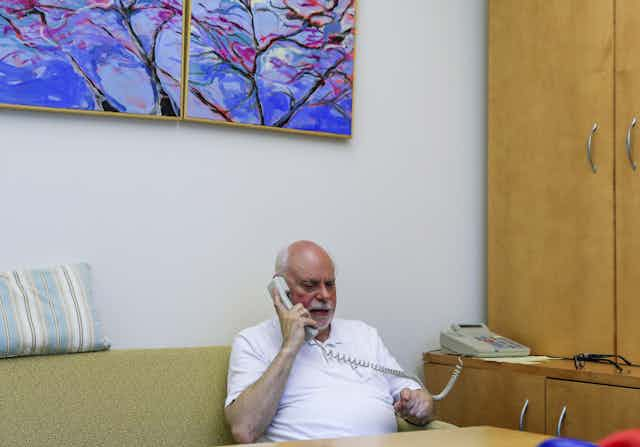The 2016 Nobel Prize in Chemistry has been awarded to three individuals for designing and developing molecular machines. Jean-Pierre Sauvage of France’s University of Strasbourg, J. Fraser Stoddart of Northwestern University in the US and Bernard L. Feringa from the University of Groningen in the the Netherlands will share a sum of US$928,000.
The machines – including motors, pumps and switches – are all on the scale of molecules. It is hoped that such inventions could find use in a range of material and medical applications.
In the 1980s and 90s, Sauvage and Stoddart became the first to efficiently make interlocked molecules, which consist of either interlocked molecular rings (catenanes) or rings of atoms threaded onto an molecular rod (rotaxanes). Critically, both scientists saw the opportunity that such molecules could act as molecular-scale machines, if they could control, for example, the rotation of the rings of a catenane or the shuttling of a ring up and down the rod of a rotaxane. Both went on to achieve this by applying an appropriate stimulus, for example an electrical current or light, which made the interlocked components move relative to one another.

Feringa’s work on molecular machines has focused on developing a family of non-interlocked molecular motors. In these machines, the molecule contains a twisted bond, around which rotation may be modulated by application of an external stimulus as for catenanes and rotaxanes.
Exciting future
All three chemists, along with others, have been looking to develop ever more sophisticated and useful examples of molecular machines. A whole range of molecules have been prepared that are chemical versions of real-world machines, including switches, pumps, motors and even cars and elevators. Notably, Sauvage and Stoddart have also developed molecular machines that can reversibly contract like muscles. These typically respond by exposure to different metal ions (charged atoms) or variation in acidity.

The motions in certain molecular machines are accompanied by changes in colour of the molecule, and so they can act as sensors for the stimulus that causes the molecular motion – signalling whenever that specific substance is present. Scientists are also looking to incorporate molecular machines into smart materials so that the motion they can induce in a single molecular machine may then affect the macroscopic material properties. For instance, a sheet of plastic could be made to expand and shrink upon exposure to light or water.
Sauvage, Stoddart and Feringa’s molecular machines are, of course, man-made. Yet there are many examples of amazing functional molecular machines in our own bodies, such as the “motor protein” kinesin and the enzyme ATP synthase, which are essential for a range of biological functions. A truly exciting possibility for the future is the use of lab-produced molecular machines as treatments for diseases that arise from the failure of our own molecular machinery. Molecular machines could also act as delivery agents for drugs, releasing them by undergoing molecular motion when they comes across a stimulus to be found at the appropriate point in the body.
The award of this Nobel Prize reflects the outstanding work that all three scientists and their research teams have contributed to this area of chemical science research, and acts as an inspiration for all those working in the fields of supramolecular chemistry and nanotechnology.

